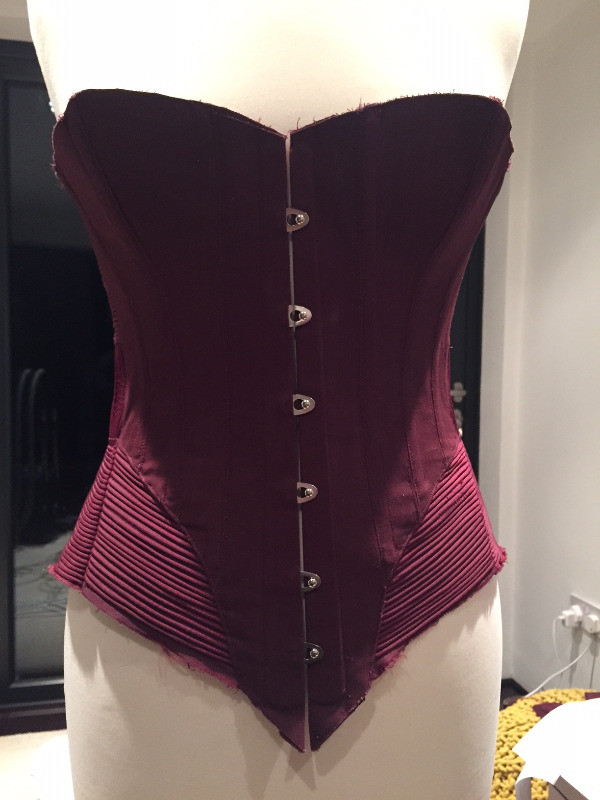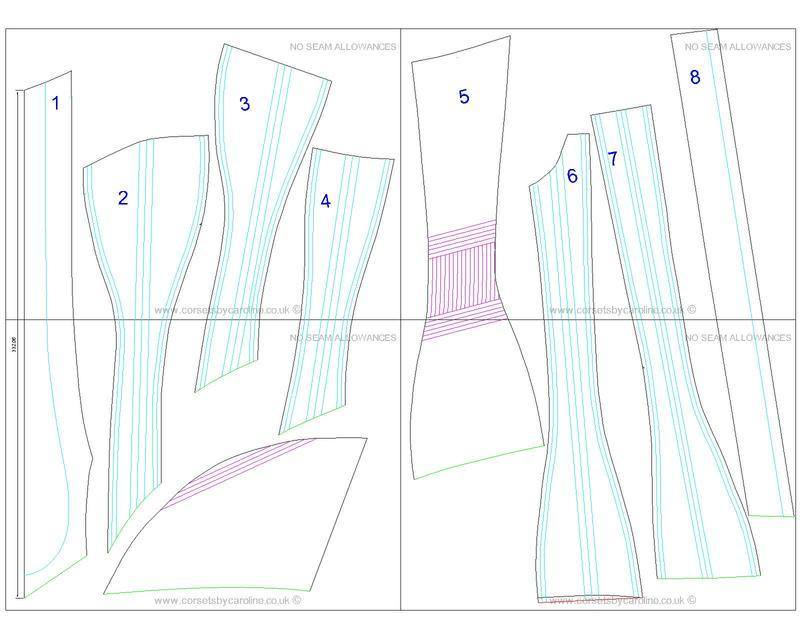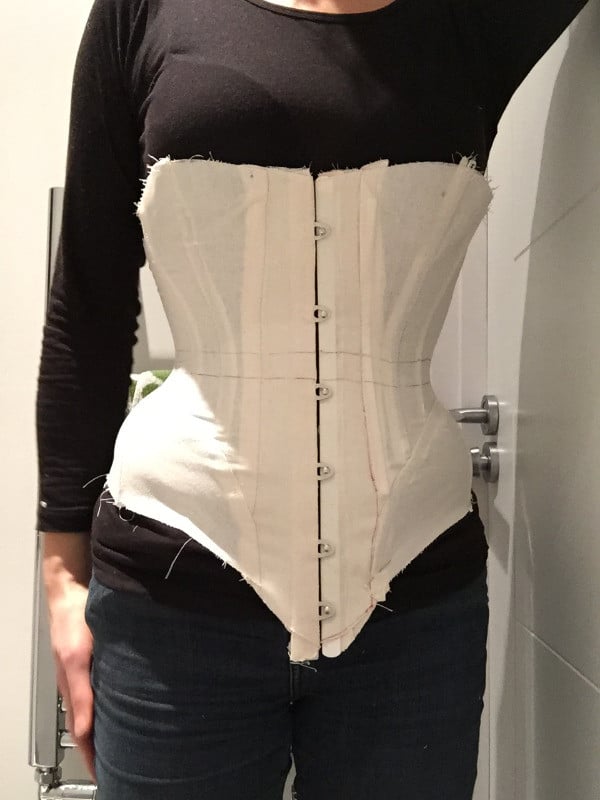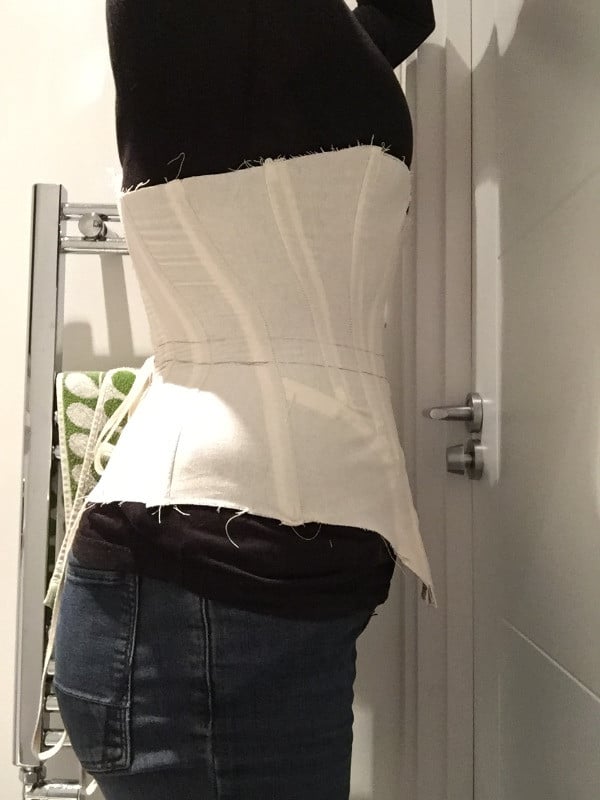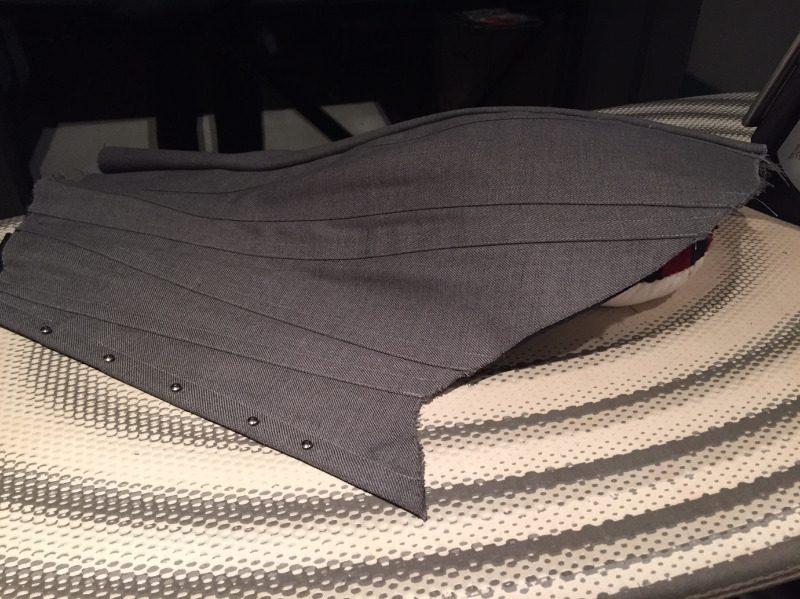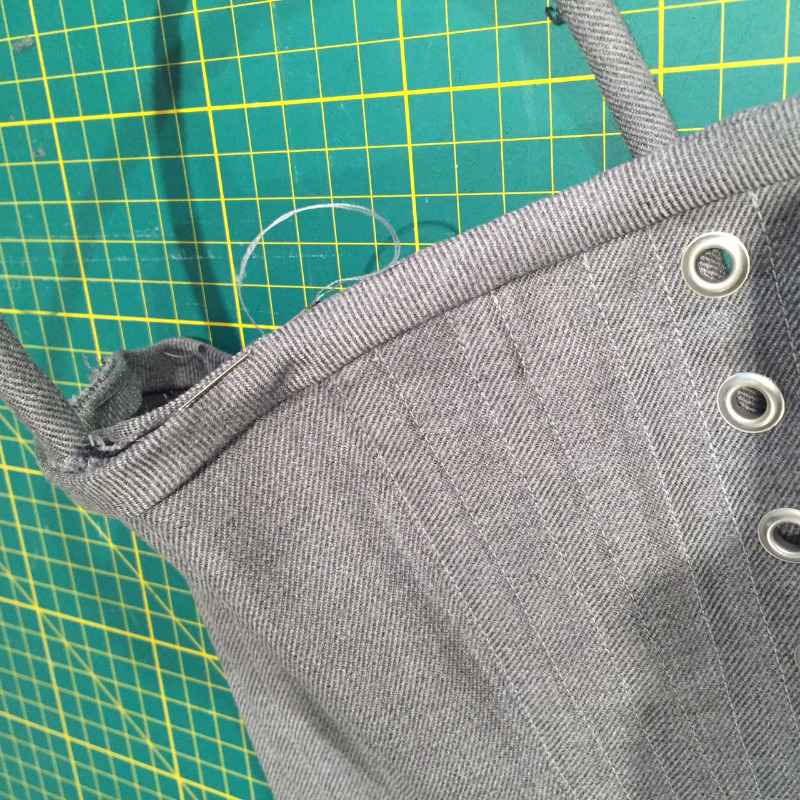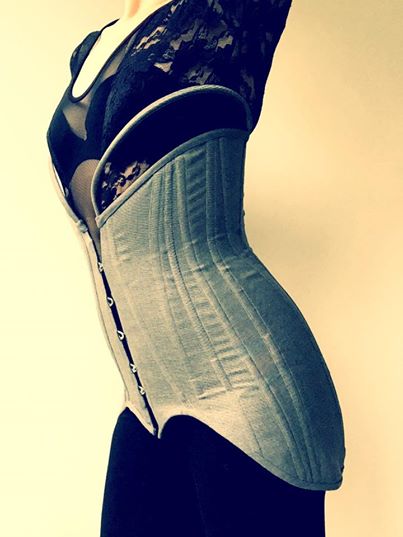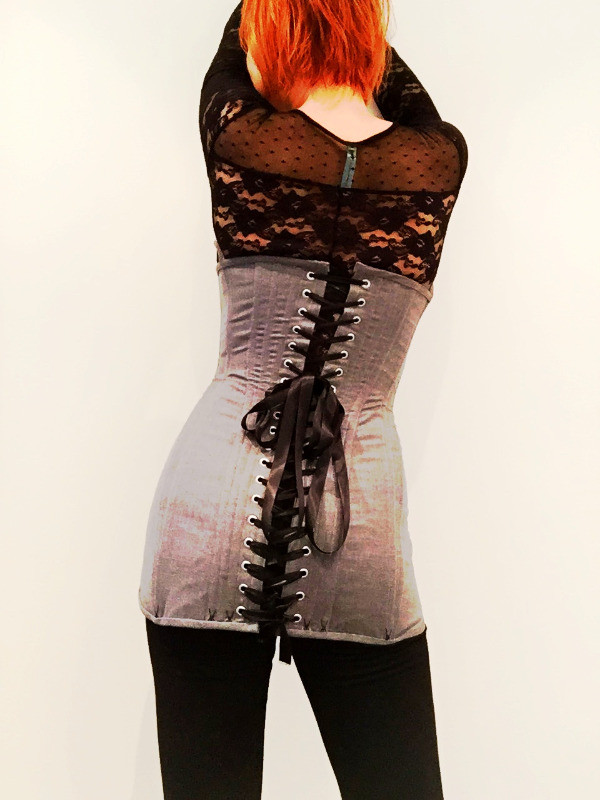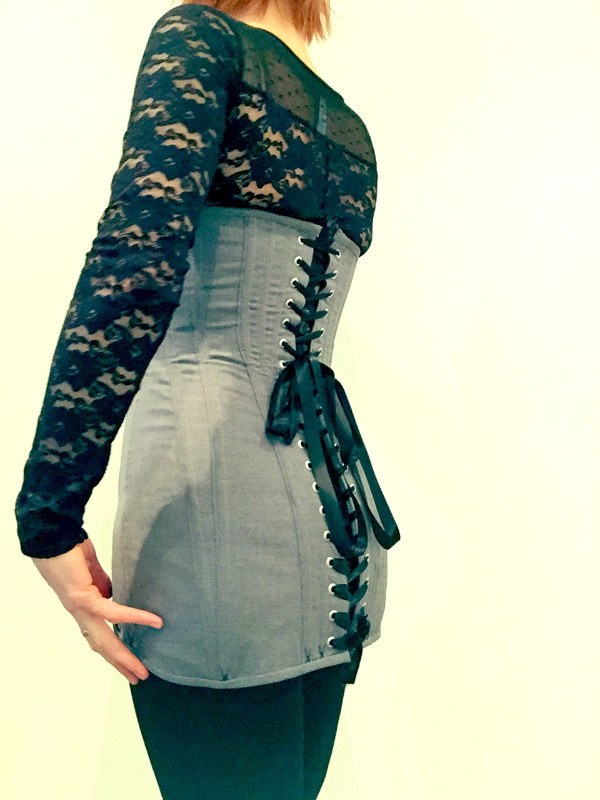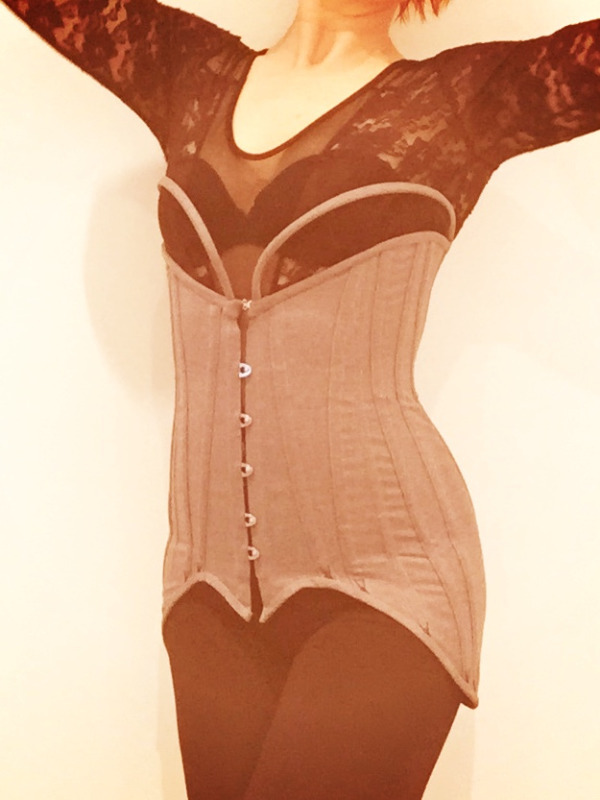Symington challenge continued
Posted on
I have ventured on to the coutil and made up a single layer according to my tweaked pattern. I didn't have to do much - just elongate the torso to ensure the top of the bust line is sitting where it should be. The original pattern states that panel 5 is corded horizontally at the hip, vertically at the waist, and horizontlaly again from the waist to the top. I tried it out on one side and left the other as plain coutil. The corded panel did not sit very well but I quite like the texture that cording this mid panel brings to the design. Anyway, I took the corded panel out for now whilst I decide what to do. Here is a picture of the (non boned) coutil when I tried it on last night for fit. The fit is OK, I just need to decide on detailing now.
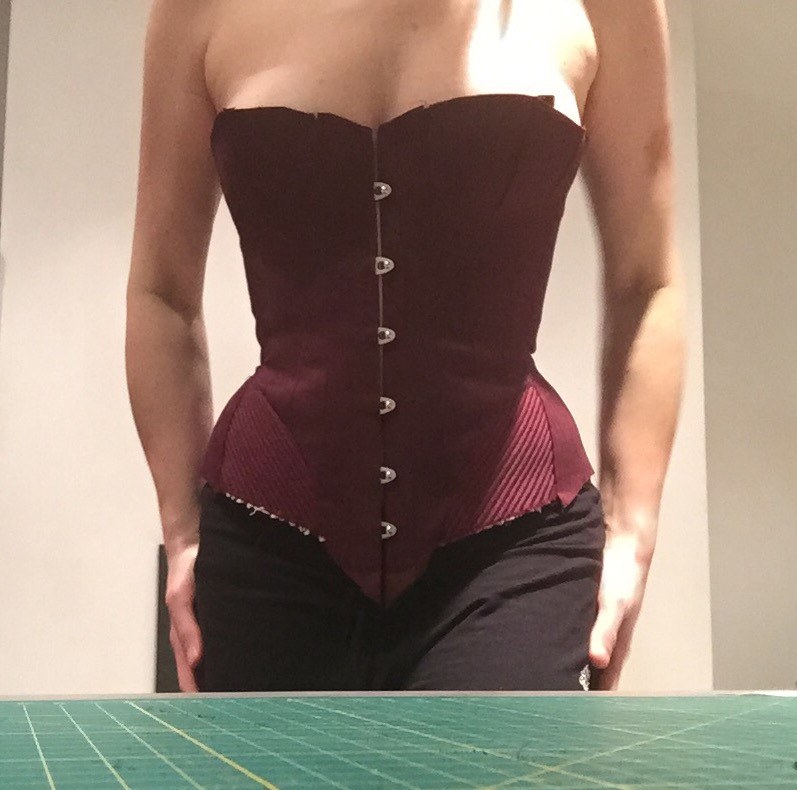
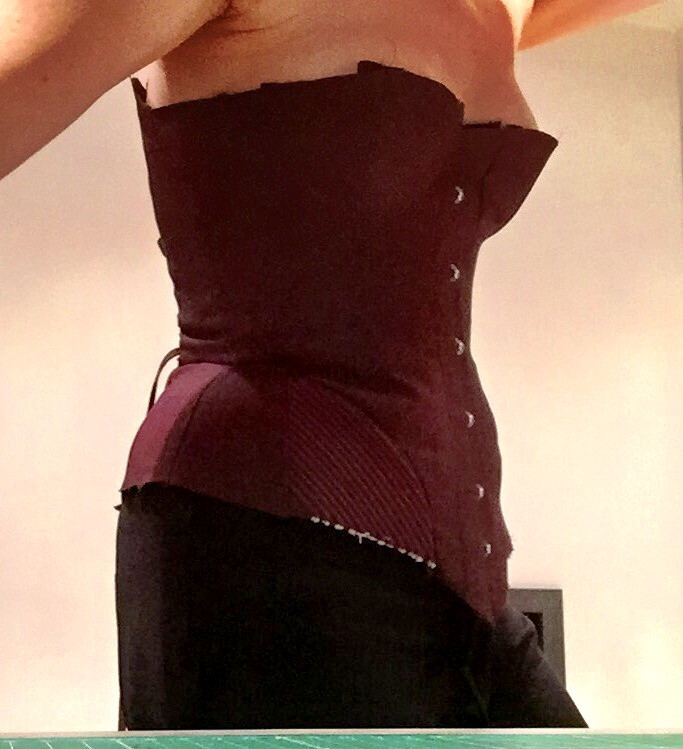
I decided to cord the sides as per the original pattern. A very time-consuming frustrating process, but I'm getting there slowly;
